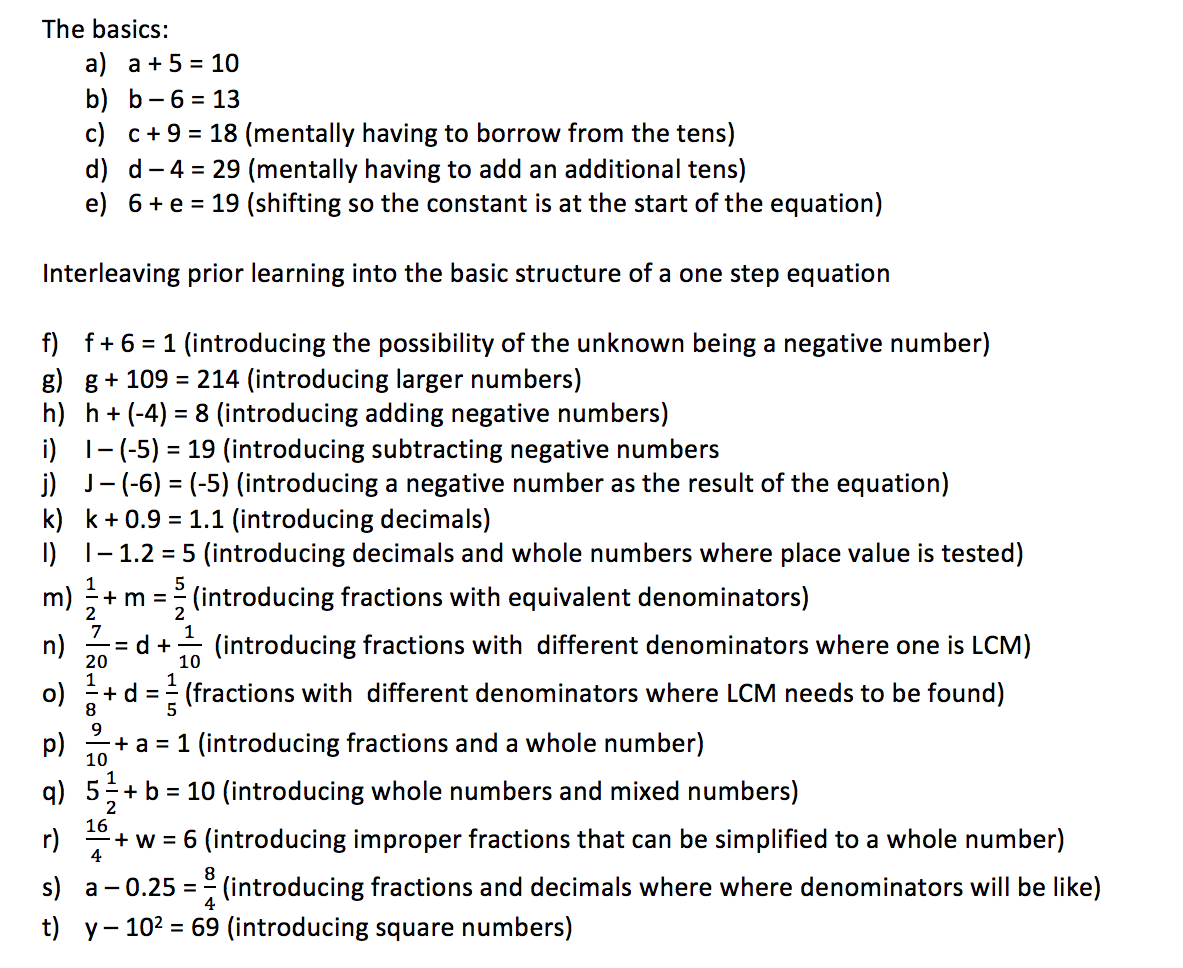My first half term at Michaela Community School has come to an end. I have really enjoyed it but it has also been very difficult. It has been difficult in terms of the mindset change I have had to make, as a teacher, and also in my teaching two subjects, including one which I had never taught before, Science (alongside teaching Maths).
I joined Michaela because I wanted to learn about curriculum design, as well as developing my pedagogy in terms of subject knowledge and sequencing of problem types. I am going to share the problem types that I have come up with (through discussing it all with the team – Bodil and Dani) whilst spending Saturday planning for next half term. I am going to start with solving one step equations and two step equations.
First, an important point: I was initially struggling to understand whether the following problem types are three step or two step equations. However, following Kris helping me to realise that they are two step equations – because we rearrange over the equal signs twice to achieve the numerical value of the unknown – I’d manage to resolve this. And so, let’s get cracking.
Solving one step equations (addition and subtraction):
I have found that, in order to induce our children to be more successful academically, in exams, and also in developing greater interconnections between different topics such as solving one step equations and fractions, we need to show them a variety of problem types. I would, formerly, teach three or four very similar problem types such as below. Now, after Craig Jeavons’ and Bruno Reddy’s talk on Shanghai pedagogy I have branched out to teach a variety of different problem types, but all with the same thread of thought. The procedure of solving one step and two step equations is made clearly visible to the children, through the carefully selected and crafted worked examples used.
The children, following this, then try a few problems on their mini whiteboards, in order for me to check their understanding. Here, I ask more questions to ensure that after each and every question more and more children are getting the correct solution. I am, effectively, trying to close the gap. Through this, I am sure that the children will find the practise of such questions listed below more meaningful, because they are applying their knowledge of the problem and procedure to questions that have a different level of surface knowledge but the depth behind solving the equation is similar in all the problem types shown above. This is what I have learnt in making these nuanced problem types on Saturday afternoon.
I hope this has been useful. I have attached a lesson plan of how I structure my teaching for a lesson. Enjoy!


Leave a Reply
You must be logged in to post a comment.